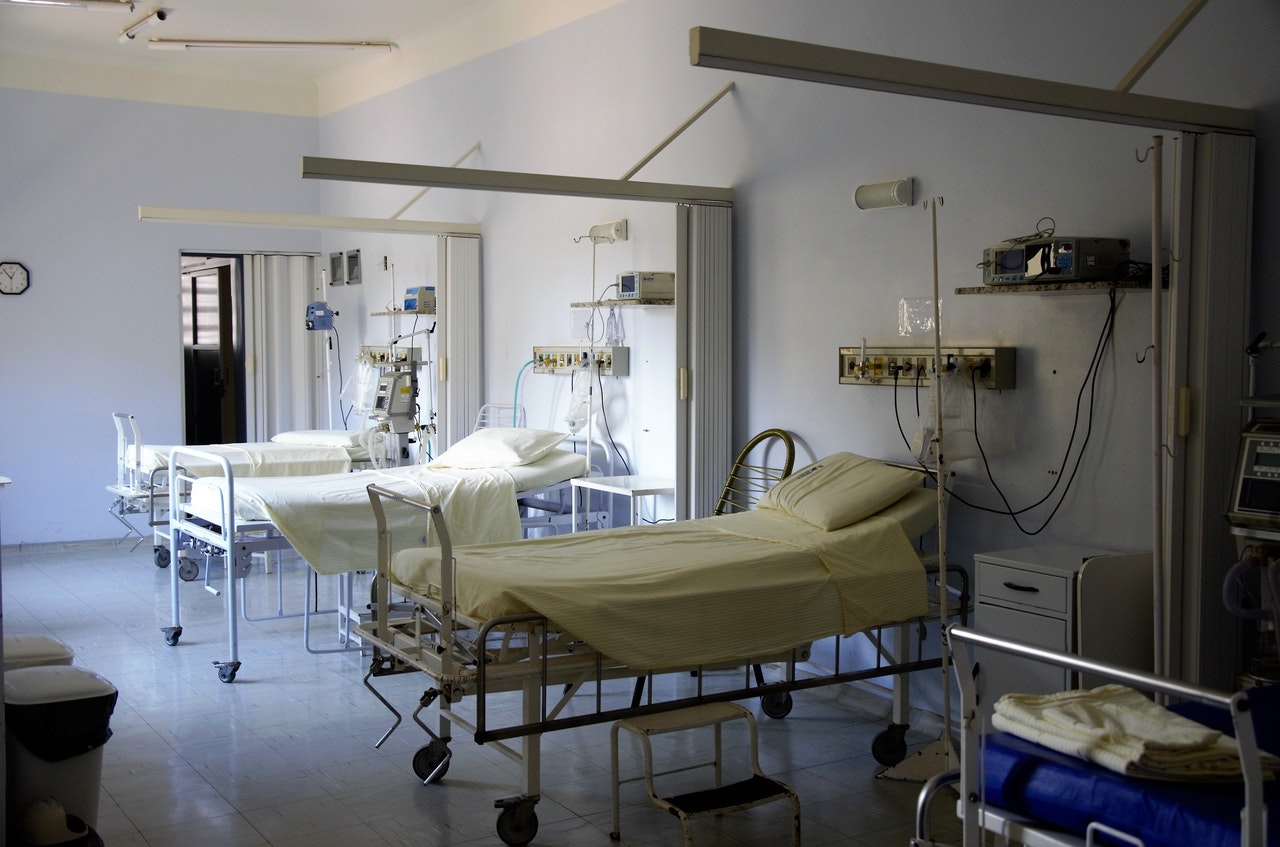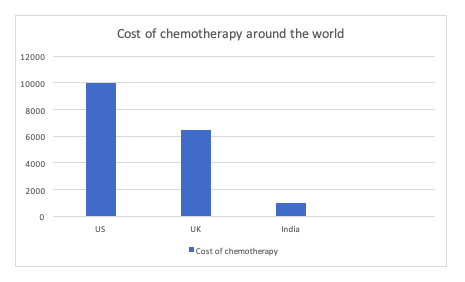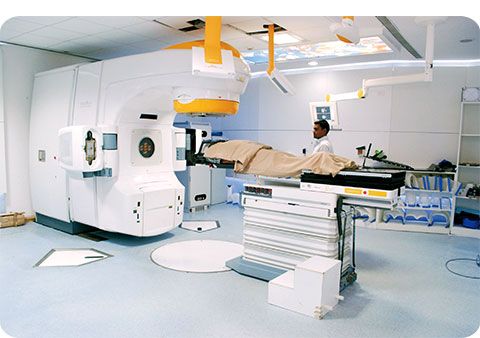Health
India is now being rated as a Better Place for Chemotherapy Treatment

Cancer is a deadly disease and it has become so common these days, that every 1 in 10 people suffer from it. In earlier days, treating cancer was very tough as there were not much inventions in the cancer treatment. With the advancements made in the field of cancer in this era, it is possible to fight cancer and win over it.
One of the treatment that is widely used in treating cancer is chemotherapy and one of the affordable destination for the treatment is India.
To know more about the cost of chemotherapy in India, Click Here. Clinicspots is an online medical Question/ Answer platform and a medical facilitator that makes medical knowledge more accessible to the masses. You will get all your queries cleared on this platform regarding chemotherapy.
Chemotherapy helps to stop or slow down the growth of the cancer cells. What makes it as a widely used treatment is that it not only kills the cancer cells in a particular part of the body but, also works for the entire body. It kills the cancer cells that are existing in the whole body.
Well, what can make your nights sleepless, is the cost of chemotherapy. The cost of chemotherapy is huge making it difficult to pay for the treatment. In countries like US, one chemotherapy cycle can cost you around $10,000.
Basically, the cost of chemotherapy around the world is very high and usually out of reach for its own citizens. However, there are places where you can get affordable chemotherapy like India.

While comparing the cost of chemotherapy of multiple countries, you will find out that India provides the most affordable treatment. What makes the cost of treatment so low in India, is the currency.
The currency of India is low as compared to the other currencies like dollar and euro. This makes the cost of living in India very low and hence, the cost of treatment is low.
Apart from this, there are other factors that influence the cost of chemotherapy in India.
Like, you can be given chemotherapy orally, IV (intravenous) or through port. How you will be delivered chemotherapy depends on your type of cancer and stage.
Oral chemotherapy is the most economical treatment as it does not involve any equipment while chemotherapy given through port is the most expensive as it involves a minor surgery and equipment.
Now, let’s discuss what makes India, an ultimate medical destination for getting chemotherapy
- High quality treatment

The treatment that is offered in India is of very high quality. The doctors here are extremely knowledgeable and experienced in their field of specialisation. They have graduated from the best medical institutes in the world.
In addition to this, are the hospitals. You will get a large number of hospitals to choose from. All the cancer hospitals in India offer high quality treatment.
- Latest technology

Well, while getting treatment, we always search for hospitals that have latest technology. India, like any other developed country has all the latest technology based equipment. Some examples of ultra – modern medical equipment are proton therapy, cyberknife, gammaknife, etc.
- Treatment at a very affordable cost

We have already discussed the cost of chemotherapy in India. As we have seen, the cost in India is comparatively very low as compared to the other countries.
Even if you add up all the expenses which includes treatment, travelling, food and stay expenses, your total expenses will be very less as compared to the other developed countries.
- World class services
The services offered in India are of international standards. You even get a translator so that you are more comfortable in communicating. The services provided here, can be customised as per your choices.
These factors make India one of the most visited place for chemotherapy.
Health
Addressing Common Myths About Vitamins and Supplements by Amanda Tirado

The wellness industry is filled with advice about vitamins and supplements, but not all of it is accurate. Many people rely on supplements for better health, but misunderstandings about how they work can lead to wasted money or even potential harm. Amanda Lorena Tirado, founder of Xmy, is passionate about educating people on making smarter supplement choices. Her company focuses on high-quality, effective products while also giving back to the community through charitable initiatives. Let’s break down some of the most common myths about vitamins and supplements so you can make informed decisions.
One of the biggest myths is that all supplements work the same way, regardless of how they are taken. Many don’t realize that traditional pills and capsules have to pass through the digestive system, where stomach acid and enzymes break them down. This can significantly reduce the amount of nutrients your body actually absorbs.
In contrast, oral strips and liquid supplements enter the bloodstream more quickly, making them more effective. For example, vitamin B12 is often poorly absorbed in pill form but is much more bioavailable in liquid or sublingual forms. Choosing the right delivery method is just as important as picking the right supplement.
Another misconception is that supplements can replace a healthy diet. Many people assume taking a daily multivitamin covers all their nutritional needs, but that’s not how the body works. Supplements are designed to support a good diet, not replace it. Whole foods provide more than just vitamins, they contain fiber, antioxidants, and other compounds that work together to benefit your health.
For example, an orange does not just offer vitamin C. It also provides fiber, flavonoids, and other nutrients that enhance absorption and support overall health. Research has shown that people who get their nutrients from food rather than supplements tend to have better long-term health outcomes. So while supplements can help fill gaps in your diet, they should not be your primary source of nutrients.
Many people also assume that if a supplement is labeled as “natural,” it must be better and safer. But that’s not necessarily true. The term “natural” is often used as a marketing tool rather than an indicator of quality or safety.
Some natural ingredients can be harmful, especially in high doses or when mixed with certain medications. On the flip side, some synthetic nutrients are actually more stable and easier for the body to absorb. The key is to choose well-researched, high-quality supplements from reputable brands rather than relying on misleading labels.
Another dangerous myth is that taking more vitamins means better health. Some believe that if a little is good, a lot must be even better, but that’s not always the case.
Certain vitamins, especially fat-soluble ones like A, D, E, and K, can build up in the body and become toxic if taken in excessive amounts. Too much vitamin A, for example, can lead to liver damage, while excessive vitamin D can cause kidney problems. Even water-soluble vitamins like B-complex and C can cause side effects in very high doses, such as nerve issues or stomach discomfort. Moderation is key when it comes to supplementation.
At Xmy, the focus is not just on convenience, it’s about real impact. The company is committed to producing supplements that prioritize effectiveness and bioavailability. But their mission goes beyond selling products.
Misinformation about supplements is everywhere, but being informed is the best way to make smarter health choices. The way a supplement is absorbed matters as much as what’s in it. A balanced diet is still the foundation of good health, and more vitamins don’t always mean better results.
Xmy is changing the way people think about supplements. Amanda and her team believe that good health is not just about what you take, it’s about making informed choices and supporting brands that genuinely care. Choosing the right supplements means choosing a brand that stands for something bigger. With Xmy, you are not just improving your health, you are supporting a company that is making a real difference.
-

 Tech5 years ago
Tech5 years agoEffuel Reviews (2021) – Effuel ECO OBD2 Saves Fuel, and Reduce Gas Cost? Effuel Customer Reviews
-

 Tech6 years ago
Tech6 years agoBosch Power Tools India Launches ‘Cordless Matlab Bosch’ Campaign to Demonstrate the Power of Cordless
-

 Lifestyle6 years ago
Lifestyle6 years agoCatholic Cases App brings Church’s Moral Teachings to Androids and iPhones
-

 Lifestyle5 years ago
Lifestyle5 years agoEast Side Hype x Billionaire Boys Club. Hottest New Streetwear Releases in Utah.
-

 Tech7 years ago
Tech7 years agoCloud Buyers & Investors to Profit in the Future
-

 Lifestyle5 years ago
Lifestyle5 years agoThe Midas of Cosmetic Dermatology: Dr. Simon Ourian
-

 Health7 years ago
Health7 years agoCBDistillery Review: Is it a scam?
-

 Entertainment6 years ago
Entertainment6 years agoAvengers Endgame now Available on 123Movies for Download & Streaming for Free
